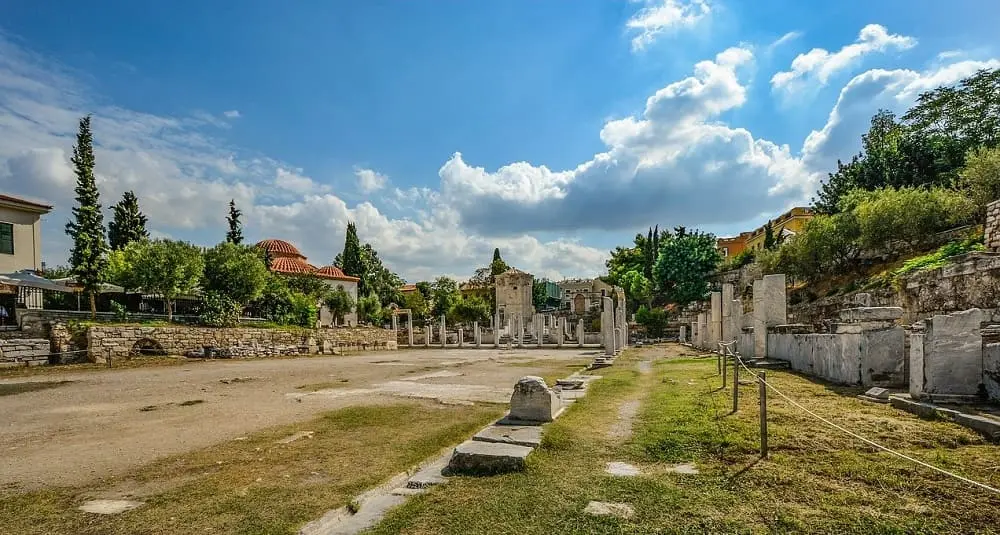What’s the difference between the Acropolis and the Agora?
Last Updated:
In ancient Greece, the Acropolis and the Agora were two central places with distinct functions, reflecting the complexity of urban and religious life in city-states.
The term Acropolis comes from the ancient Greek akropolis, meaning high city (from akron for summit and polis for city). It refers to a fortified hill overlooking the city, used primarily for religious and defensive purposes. Athens’ Acropolis is the most famous, home to iconic monuments such as the Parthenon, dedicated to the goddess Athena, protector of the city.
Acropolis
The Acropolis served as a major religious center, with temples and shrines dedicated to the city’s tutelary deities. Religious ceremonies and processions, such as the Panathenaeum in honor of Athena, were celebrated here. Thanks to its elevated, fortified position, the Acropolis offered refuge in case of attack, protecting the city’s inhabitants and treasures. It also represented the city’s power, wealth and religious devotion, testifying to its cultural and political influence.
Agora
Agora is the ancient Greek word for gathering place or assembly. Generally located in the center of the city, the agora was an open public square at the heart of social, political and economic life.
The agora was the place where citizens gathered to discuss public affairs, participate in assemblies and exercise democracy, particularly in Athens. It was a bustling marketplace where artisans, merchants and farmers sold their wares. Stalls and stores were plentiful, facilitating economic exchange. The Agora was also a meeting place for citizens, hosting philosophers, orators and artists. Public buildings, temples and monuments reflect the diversity of activities that took place here.
The Acropolis stands on a hill overlooking the city, while the Agora is in the center of the city, on flat ground. The Acropolis was essentially religious and defensive, housing temples and serving as a fortress, while the Agora was the center of public, political, commercial and social life. The Acropolis could be reserved for certain religious ceremonies, while the Agora was an open space accessible to all citizens.
Despite their distinct functions, the Acropolis and the Agora were closely linked in the daily lives of the Greeks. Religious processions, such as the Panathenaeum, often moved from the Agora to the Acropolis, symbolizing the union between civic and religious activities. This interconnection reflected the harmony between the different spheres of ancient Greek society.
The Acropolis and the Agora were two fundamental pillars of the ancient Greek city, each playing a specific but complementary role. The Acropolis, with its majestic hilltop temples, embodied the religious and symbolic dimension, while the Agora, open and bustling, represented the city’s political, commercial and social dynamism. Understanding the distinction between these two spaces allows us to appreciate the complexity and richness of ancient Greek civilization.
history

What's the difference between the Acropolis and the Agora?
Answer
The Acropolis is a fortified hill housing sacred temples, while the Agora is a public square at the heart of the city, dedicated to political, commercial and social activities.